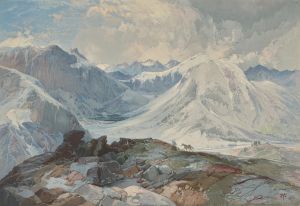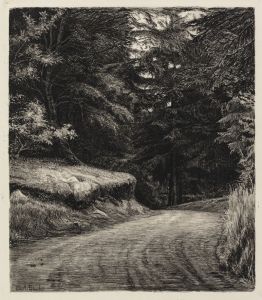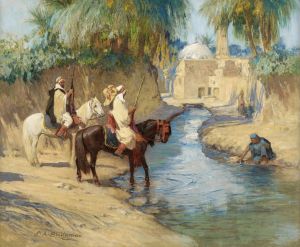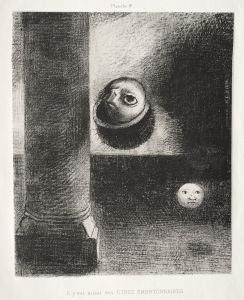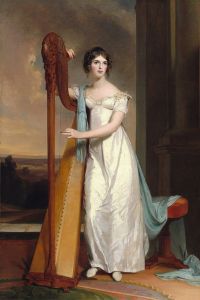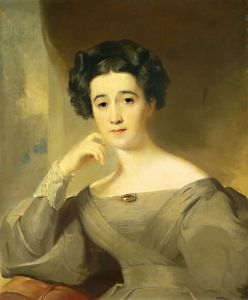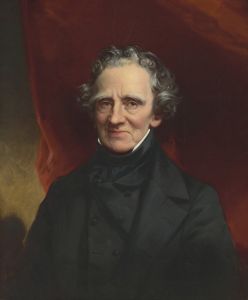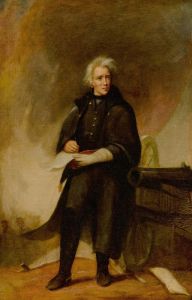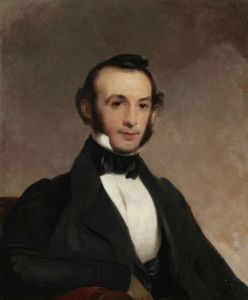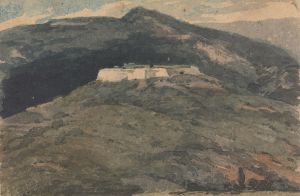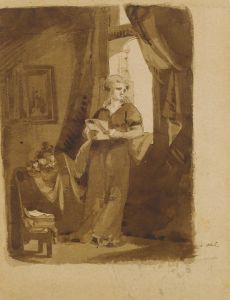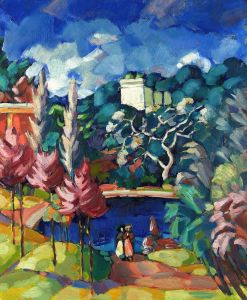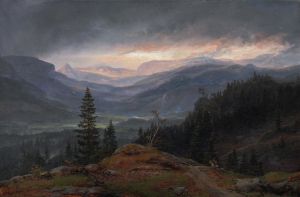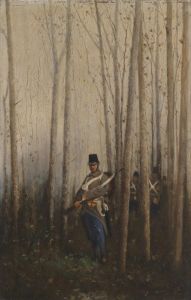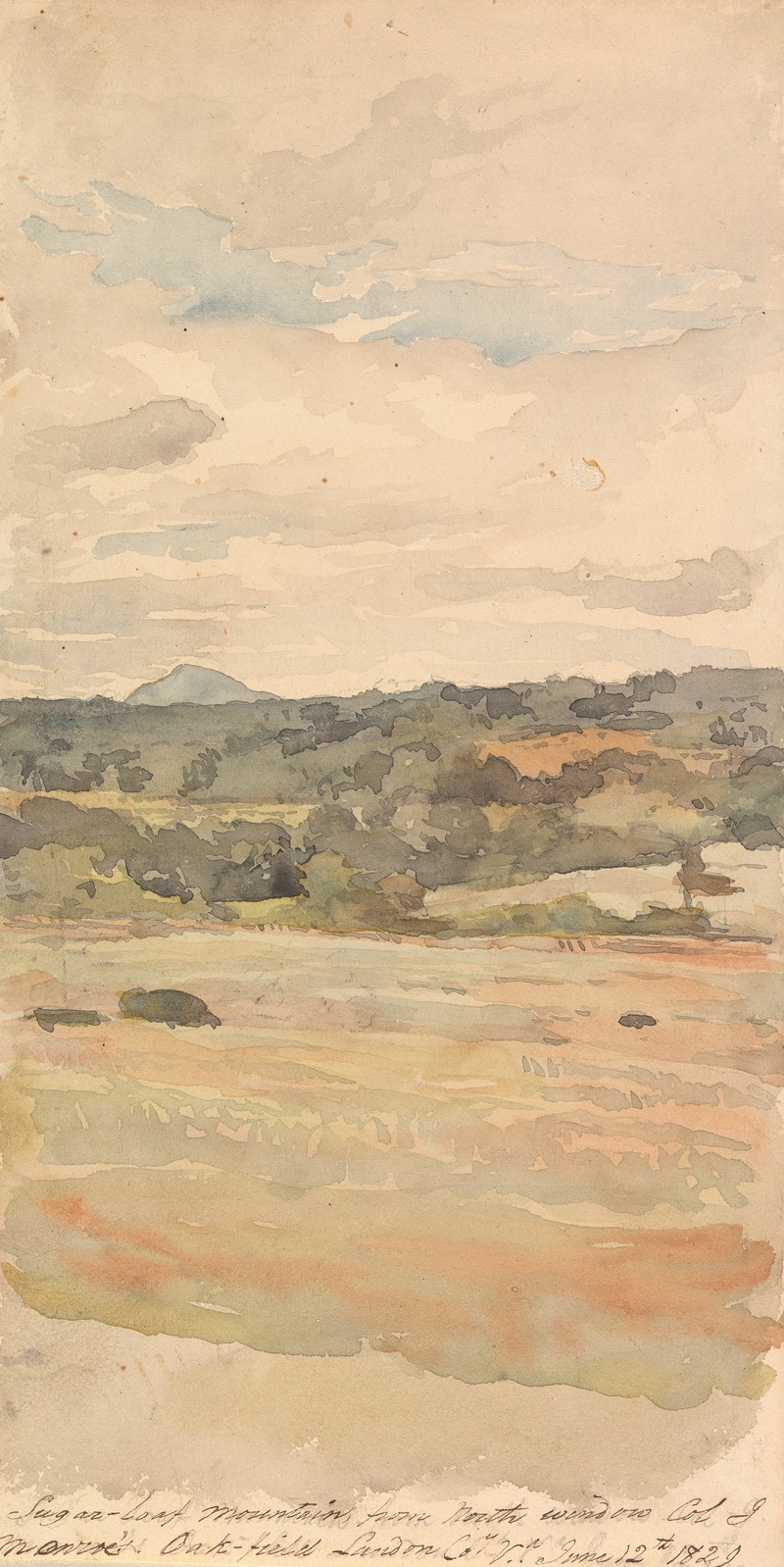
Sugar-Loaf Mountain, From North Window, Col. J. Monroe’s. Oak-Field Landon Co. Va. June 12th 1829
A hand-painted replica of Thomas Sully’s masterpiece Sugar-Loaf Mountain, From North Window, Col. J. Monroe’s. Oak-Field Landon Co. Va. June 12th 1829, meticulously crafted by professional artists to capture the true essence of the original. Each piece is created with museum-quality canvas and rare mineral pigments, carefully painted by experienced artists with delicate brushstrokes and rich, layered colors to perfectly recreate the texture of the original artwork. Unlike machine-printed reproductions, this hand-painted version brings the painting to life, infused with the artist’s emotions and skill in every stroke. Whether for personal collection or home decoration, it instantly elevates the artistic atmosphere of any space.
Thomas Sully's painting "Sugar-Loaf Mountain, From North Window, Col. J. Monroe’s. Oak-Field Landon Co. Va. June 12th 1829" is an intriguing work by the renowned American portrait painter. Sully, who was born in England in 1783 and emigrated to the United States with his family in 1792, became one of the most prominent portrait artists in America during the 19th century. Although he is best known for his portraits, Sully also created landscapes and historical scenes, which showcase his versatility and skill as an artist.
This particular painting, dated June 12, 1829, depicts a view of Sugar-Loaf Mountain as seen from the north window of Colonel J. Monroe's residence, Oak-Field, in Loudoun County, Virginia. The painting captures the serene and picturesque landscape of the region, characterized by its rolling hills and lush greenery. Sugar-Loaf Mountain, located in the Catoctin Mountain range, is a notable landmark in the area and has been a subject of artistic inspiration for its natural beauty.
Sully's choice to paint this landscape may have been influenced by his travels and connections with prominent figures of the time. The mention of "Col. J. Monroe" in the title suggests a possible connection to James Monroe, the fifth President of the United States, although it is not explicitly confirmed if this refers to him or a relative. During the early 19th century, it was common for artists to receive commissions from wealthy patrons, and Sully's reputation would have made him a desirable choice for such work.
The painting itself is a testament to Sully's ability to capture the essence of a scene with attention to detail and a keen eye for composition. The use of light and shadow in the painting highlights the contours of the landscape, while the careful brushwork brings out the textures of the foliage and the distant mountain. Sully's landscapes, though less known than his portraits, demonstrate his appreciation for the natural world and his skill in rendering it on canvas.
While there is limited information available about the specific circumstances surrounding the creation of this painting, it remains an important example of Sully's work outside the realm of portraiture. It reflects the broader trends in American art during the early 19th century, when artists began to explore the country's diverse landscapes and incorporate them into their work. This period saw a growing interest in the American wilderness and the unique beauty of its natural features, which artists like Sully helped to document and celebrate through their art.
In summary, "Sugar-Loaf Mountain, From North Window, Col. J. Monroe’s. Oak-Field Landon Co. Va. June 12th 1829" is a notable work by Thomas Sully that captures the tranquil beauty of the Virginia landscape. Although primarily recognized for his portraits, Sully's landscape paintings offer valuable insights into his artistic range and the cultural context of his time. This painting serves as a reminder of the rich artistic heritage of the early United States and the enduring appeal of its natural scenery.





